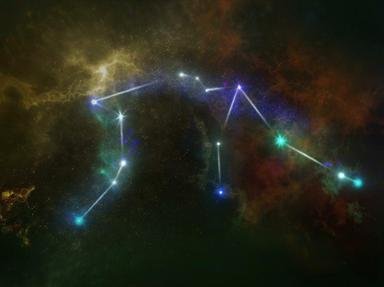Quiz Answer Key and Fun Facts
1. General term for the angular relationship between planets:
2. House system commonly used in natal charts:
3. Point usually near the zenith on a natal chart:
4. Separation of 120 degrees between planets:
5. Apparent backward motion of a planet in its orbit:
6. Reference work listing planetary positions by date:
7. The daily positions of the sun, moon and planets as seen from Earth:
8. Comparison of two charts to evaluate compatibility:
9. Sign on the eastern horizon at the time of birth:
10. One of the quadruplicities denoting the shared nature of a group of signs:
Source: Author
austinnene
This quiz was reviewed by FunTrivia editor
WesleyCrusher before going online.
Any errors found in FunTrivia content are routinely corrected through our feedback system.
